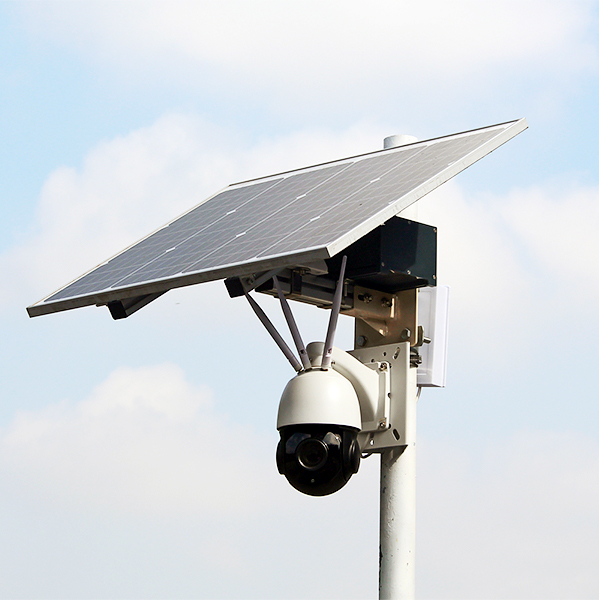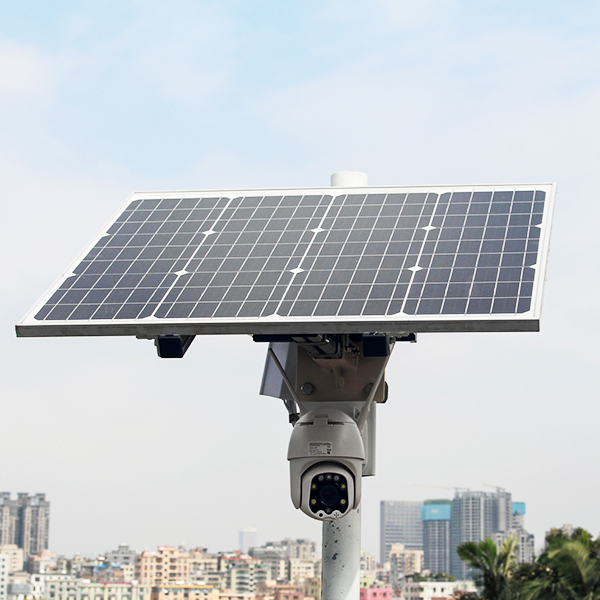solar.Although now well into the 21st century, we have never really harnessed this elusive renewable energy source.
As a kid in the ’80s, I fondly remember my Casio HS-8 — a pocket calculator that almost magically needed no batteries thanks to its small solar panel.It’s been helpful for me from elementary school to college and seems to have opened a window into what’s possible in the future without having to throw away Duracells or bulky power supplies.
Of course, things didn’t go that way, but there have been recent signs that solar is back on tech companies’ agendas.Notably, Samsung is using panels in its latest high-end TV remotes, and is widely rumored to be working on a solar-powered smartwatch.

The SoloCam S40 has an integrated solar panel, and Eufy claims the device needs just two hours of sunlight a day to keep enough power in the battery to work 24/7.This provides tangible benefits for many smart security cameras that either require regular battery charging or need to be connected to a power source, limiting where they can be placed.
With its 2K resolution, the S40 also has a built-in spotlight, siren and intercom speaker, while its 8GB of internal storage means you can view the camera’s motion-triggered footage without paying for an expensive cloud storage subscription.
So, does the Eufy SoloCam S40 mark the beginning of a solar revolution in security cameras, or does a lack of sunlight make your home vulnerable to intruders?Read on for our verdict.
Inside the box you’ll find the camera itself, a plastic ball joint for mounting the camera to the wall, swivel mount, screws, USB-C charging cable, and a handy drill template for attaching the device to the wall.
Like its predecessor, the S40 is a self-contained unit that connects directly to your home Wi-Fi network, so it can be installed anywhere in your home you like, as long as it can still receive a strong signal from your router.Of course, you’ll also want to keep the battery charged by placing it somewhere that can receive at least two hours of direct sunlight.
A matte black solar panel sits on top, without the typical shiny PV panels we’ve come to expect from this technology.The camera weighs 880 grams, measures 50 x 85 x 114 mm, and is IP65-rated for water resistance, so it should be able to withstand any elements that might be thrown at it.
Opening the flap on the back reveals a sync button and USB-C charging port, while the bottom of the S40 houses the unit’s speakers.The microphone is located on the front of the device to the left of the camera lens, next to the light sensor and motion sensor LED indicators.
The S40 captures video footage at up to 2K resolution, features a 90dB alarm that can be triggered manually or automatically, AI personnel detection, automatic infrared night vision via a single LED, and full-color shooting in the dark via its built-in flood-light.
The SoloCam also allows you to use the Alexa and Google Assistant voice assistants to control various functions and view feeds, but unfortunately doesn’t support Apple’s HomeKit.
Like previous Eufy cameras, the S40 is simple to set up.We encourage you to fully charge the device before installation, it will take a full 8 hours to get the battery to 100% before we can get the device up and running.
In theory, this is the only time you’ll need to charge it thanks to the solar panels, but more on that later.
The rest of the setup process is a breeze.After downloading Eufy’s app to your smartphone or tablet and creating an account, simply press the sync button on the camera, select your home Wi-Fi network, and use the camera lens to scan the QR code phone.Once the camera is named, it can be installed for monitoring.
The Wi-Fi antenna looked great, and when the S40 was placed 20 meters away, it easily stayed connected to our router.

The S40′s companion app is used across the entire line of Eufy security cameras, and it went through a lot of updates and improvements during our testing on Android and iOS.While prone to hangs and crashes initially, it becomes reassuring later in the review process.
The app provides you with thumbnails of any Eufy cameras you have installed, and clicking on one takes you to that camera’s live feed.
Instead of recording footage continuously, the S40 captures short video clips when motion is detected.The app lets you manually record footage directly into your mobile device’s storage, not the S40′s storage.But long clips drain the SoloCam’s battery quickly, which is why clips are so short by default.
In the default Optimal Battery Life mode, these clips are between 10 and 20 seconds, but you can switch to Optimal Surveillance mode, which makes clips up to 60 seconds long, or drill down into settings and customize up to 120 seconds – Two minutes in length.
Of course, increasing the recording time drains the battery, so you’ll need to find a compromise between the two.
In addition to video, still images from the camera can also be captured and saved to your mobile device.
In our testing, it took about 5 to 6 seconds to receive an alert when a mobile iOS device was detected.Tap the notification and you’ll immediately see a playable recording of the event.
The S40 delivers impressive 2K-resolution images, and video from the 130° field-of-view lens is crisp and well-balanced.
Reassuringly, there was no overexposure popping when the camera lens was placed in direct sunlight, and the color footage looked great at night with a 600-lumen spotlight—accurately capturing clothing details and tones.
Of course, the use of floodlights places a considerable strain on the battery, so most users will probably ditch the floodlights and opt for a night vision mode, which also delivers excellent shots, albeit in monochrome.
The audio performance of the microphone is also excellent, delivering clear, distortion-free recordings even in inclement weather.
The S40′s in-device AI can identify whether motion is caused by a person or another source, and options on the app allow you to filter whether you want to detect people, animals, or any significant movement recorded by the device.The S40 can also be set to record only movement within a selected active area.
Somewhat disturbingly, the app also offers a “crying detection” option, the functionality of which isn’t fully explained in the companion manual.
The detection technology worked extremely well during testing, with clear thumbnails of detected people providing alerts when triggered.The only false positive was a pink towel left to dry on the tap outside.It was detected as a human when it flapped in the breeze.
The app also lets you create recording schedules, configure alarms, and use your phone’s microphone to communicate two-way with anyone within range of the camera — a feature that works so efficiently that there’s virtually no lag.
Controls for built-in spotlight brightness, tint and 90db siren are also found in the app.It’s worth noting that the option to manually turn on lights and sirens is tucked away in a submenu – which is far from ideal if you need to quickly deter potential intruders.They need to be on the home screen.
Sadly, the light is limited to short-term use and cannot be used as an exterior light on your property.
We tested the S40 over two cloudy months in Dublin – arguably the most unfavorable set of conditions for solar panels on the Finnish side.During this period, the battery lost 1% to 2% per day, with remaining capacity hovering around 63% by the end of our tests.
This is because the device is partially aimed at the doorway, which means the camera is fired an average of 14 times a day.According to the app’s handy dashboard, the solar panel provided about 25mAh of battery replenishment per day during this period — roughly equivalent to 0.2% of the total battery capacity.Maybe not a huge contribution, but not surprising under conditions.
The biggest question, and one we can’t answer right now, is whether the extra sunlight in spring and summer will be enough to keep it running without having to manually charge the device.Based on our testing, it appears the device will need to be brought indoors and hooked up to a charger within the next few months.
It’s by no means a deal-breaker — it’s not a problem at all for those in sunny parts of the world — but it reduces the convenience of its key features for users where cloudy weather in autumn and winter is the norm.
Eufy, a subsidiary of emerging Chinese tech giant Anker, received rave reviews last year for its wireless, battery-powered SoloCam E40, which features onboard storage and Wi-Fi.
The S40 builds on the technology in this model, and is literally a bigger device to house its solar panels.Unsurprisingly, it’s also more expensive, at £199 ($199 / AU$349.99), which is £60 more than the E40.
In the time frame of this review, it’s hard to make a full judgment on the S40′s solar performance — it works, and we don’t expect solar charging to be an issue in the spring and summer.But what we can’t say for sure at this stage is whether it can last a full autumn and winter without the need for manual charging.
For some users this won’t be too much of an inconvenience, but with a similarly specified but no solar power SoloCam E40 can last up to four months before juicing is required, and the cheaper model may be more convenient for users. It makes sense that there are not so many sunny places in the world.
That aside, with its cost-effective subscription-free storage and smooth apps, the S40 is as painless as an outdoor security camera.
Combined with its superior image and sound quality, wireless versatility and impressive AI detection, it delivers on its promise of being a truly modern security camera.
Note: We may earn a commission when you purchase through a link on our website at no additional cost to you.This does not affect our editorial independence.learn more.
Post time: Apr-08-2022




